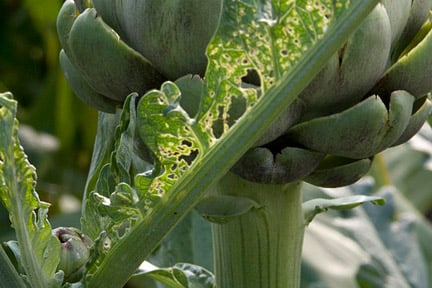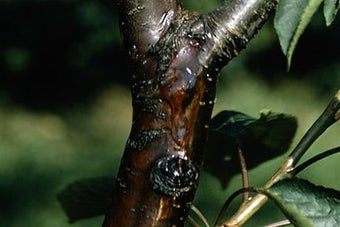
Quick facts
Common name - Capsid bugs
Scientific name - Various species, mainly Lygocoris pabulinus and Lygus rugulipennis and apple capsid, Plesiocoris rugicollis
Plants affected - Many, including apples, beans, Caryopteris, Chrysanthemum, Clematis, Dahlia, Forsythia, Fuchsia, Hydrangea, Phygelius, potatoes, roses and Salvia
Main symptoms - Leaves develop with many small holes. Flowers may be distorted or absent
Most active - May-August
What are capsid bugs?
Capsid bugs are members of the true bug family Miridae, true bugs have sucking mouthparts. There are over 200 species of mirid bug in Britain. A majority feed on plant , most do not affect garden plants, some species are predatory. Some capsid bugs are a natural part of any garden.
A few species do feed on plant sap at the shoot tips and on flower , of a wide range of herbaceous and woody garden plants. These include the common green capsid (Lygocoris pabulinus) and the tarnished or bishop bug (Lygus rugulipennis).
Some capsid bugs have a more restricted host range such as the apple capsid (Plesiocoris rugicollis), which feeds on apple and pear and can affect fruits.
Adult capsid bugs are green or brown and up to 6 mm long (¼ in). Capsid bug wings are folded over the abdomen and have the basal two-thirds coloured and thickened, the outer third is translucent, which shows as a clear diamond-shaped area at the rear end of the insect. Species that do not affect garden plants can be very similar in appearance. Nymphs are wingless and generally pale green in colour.
Symptoms
Signs of damage appear from May to early September.
- As capsid bugs feed, they damage and kill some of the cells where the mouthparts have probed
- The leaves near the shoot tips develop many small, brown-edged, holes and may be misshapen
- Affected flower , particularly those of fuchsia, may fail to develop, or, in the case of chrysanthemum, dahlia and other daisy-like flowers, open unevenly
- Apple capsid (Plesiocoris rugicollis) damages the foliage and also feeds on young fruitlets, which results in bumps or raised corky growths developing on the mature fruit. These blemishes are superficial and do not affect the eating and keeping qualities of the fruits. Apple capsid can also affect pear

Management
The presence of capsid bugs in a garden is not unusual, they are a component of garden and are part of a functioning garden ecosystem.
- Tolerate some damage, by the time distorted leaves are noticed it can be too late to take control measures. Often the vigour of plants is unaffected and they soon recover. Vegetables do not need treating
- Encourage predators and other natural enemies in the garden such as birds and ground beetles
- Apple cultivars vary in susceptibility to apple capsid – the fruits of Charles Ross’, ‘Allington Pippin’ and ‘Edward VII’ are some which may be extensively marked by capsid bumps
- If capsid bugs have been a problem in the past removing unwanted plants which can act as alternative host plants can reduce the problem
- Removing dead vegetation in late winter may destroy overwintering sites for the tarnished plant bug
Biology
- Apple capsid overwinters as eggs that are laid in the of apple branches and shoots, these eggs hatch in April to May. They become adult in June and July and there is one generation a year
- Common green capsid overwinters as eggs inserted into a range of trees and shrubs. They eggs hatch in spring and become adults by July. These lay eggs and produce a second generation before the winter
- The tarnished plant bug overwinters as an adult in sheltered places. They emerge in spring and lay eggs on a wide range of plants. There are two generations a year








